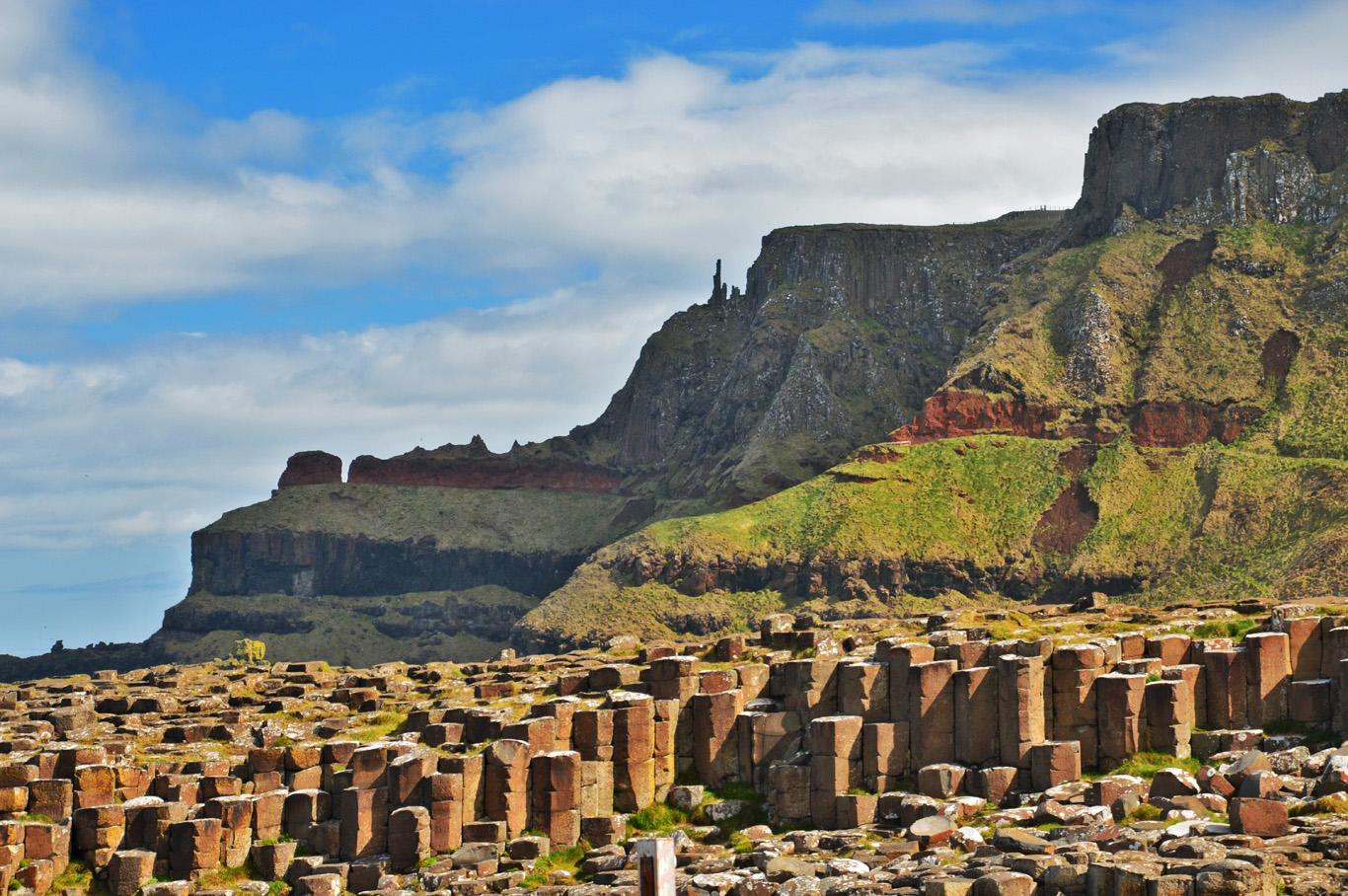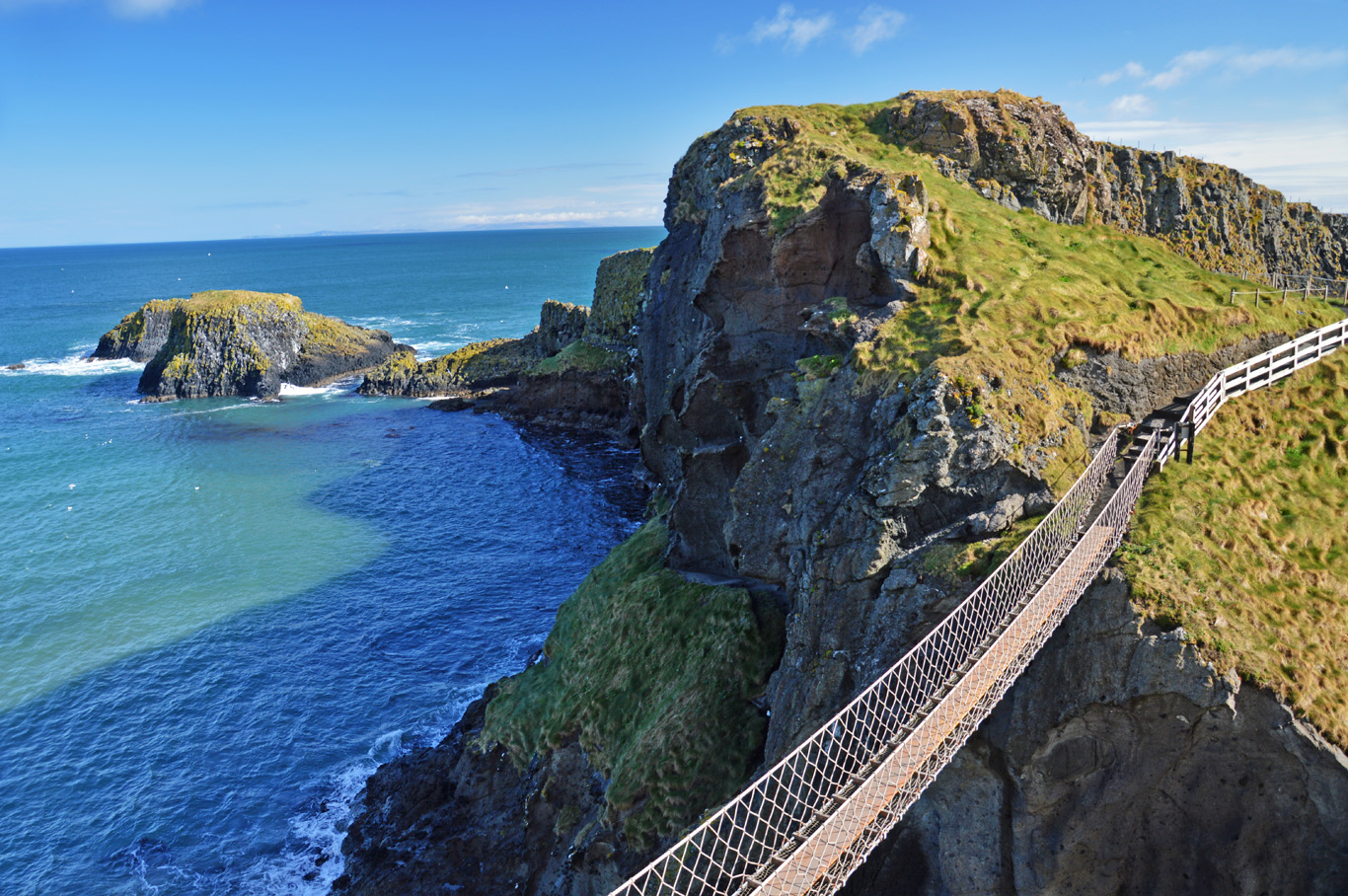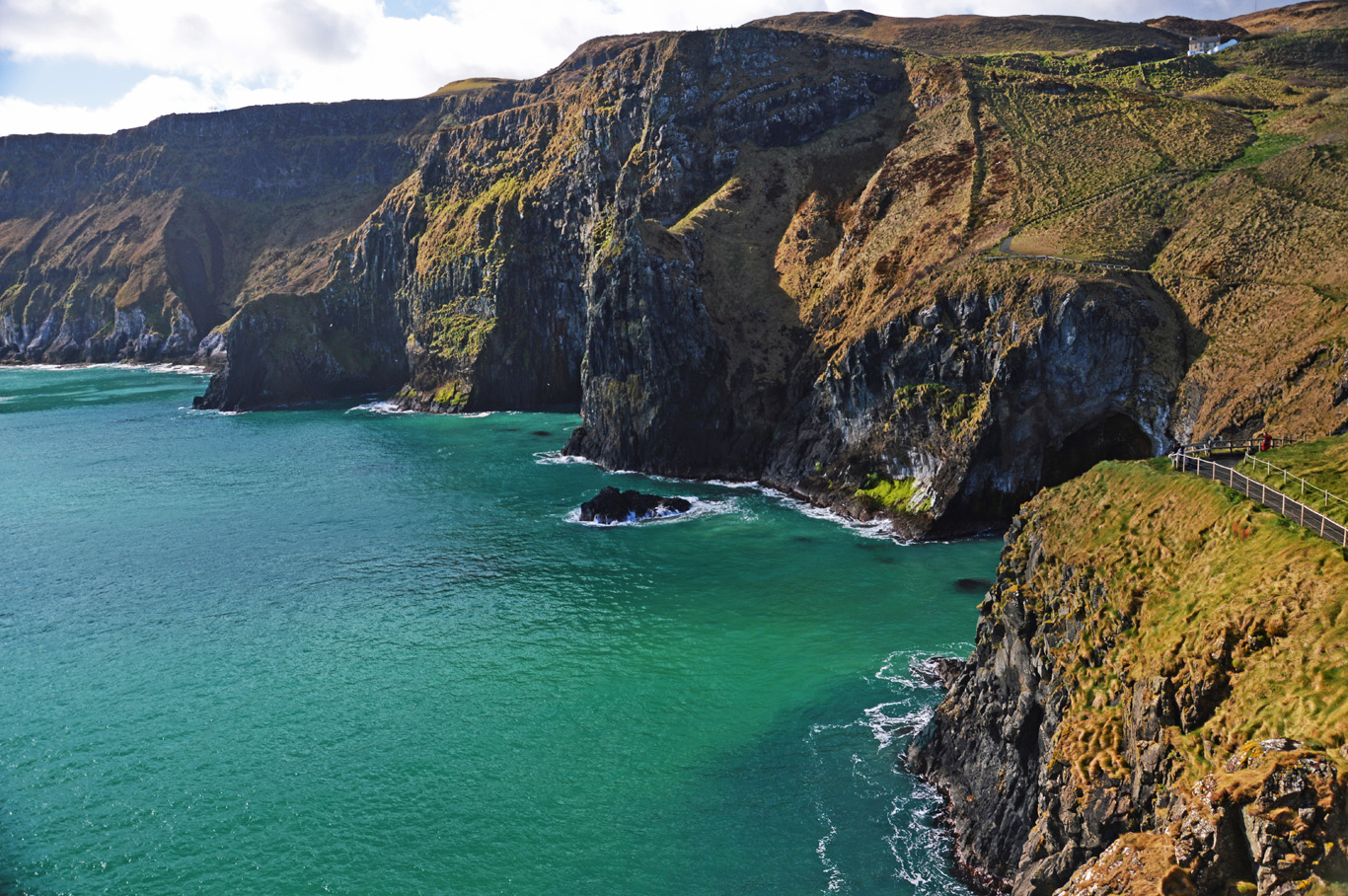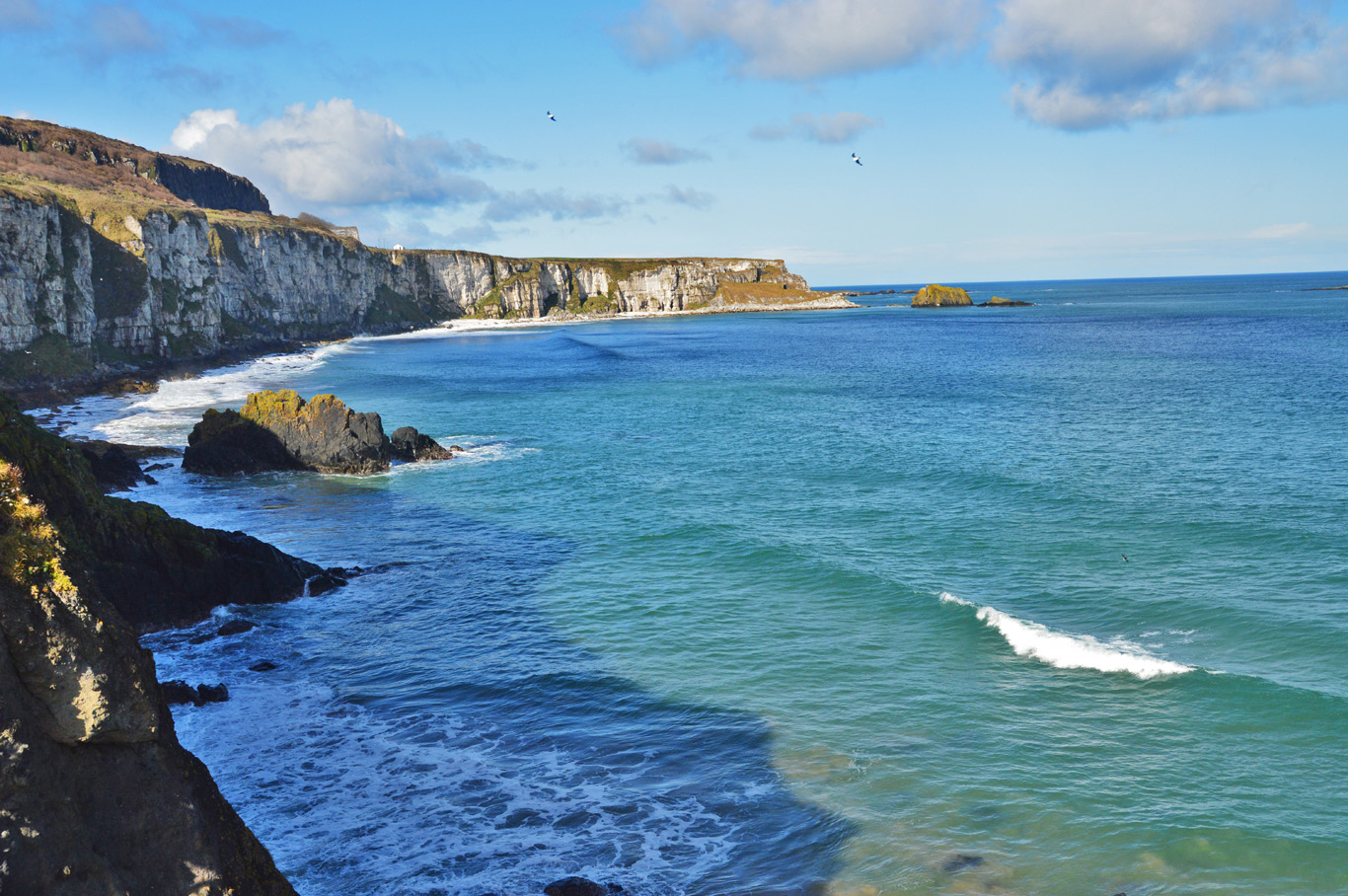Giant's Causeway is obviously the most exceptional landmark of Northern Ireland. Looking at the hexagonal basalt columns, of different height and size, with perfectly even sides, it's difficult to believe that they were formed only by natural processes. Their resemblance to ancient ruins may lead you to believe that some mystical beings created this phenomenon a long time ago. No wonder, in the course of the centuries, many legends and myths came into existence in relation to the origin of the eerie formations. Moreover, not far away from Giant's Causeway, you can walk over the famous Carrick-a-Rede rope bridge and admire the cliffs, crashing waves and rugged coastline.
How to get to Giant's Causeway
Giant's Causeway basalt column, 6 km (4 mile) coastline is located in county Antrim. The easiest way is to drive, Ireland is not that big, so you can reach it from Dublin (263 km/160 miles) - 3 hour drive or Belfast (100 km/60 miles) - 1 hour 30 minutes. If you don't have a chance to drive, there are many tours from Dublin or Belfast you can choose from. If you want to depart from Dublin, a day tour will cost you around 60 EUR (67 USD). From Belfast, it's considerably cheaper - around 25 GBP (35 EUR/39 USD). The tours include also the Carrick-a-Rede bridge in their itineraries. If you wish to visit only the Giant's Causeway - you can do so by public transport. From Belfast, take a bus or train to Coleraine and then another bus (Ulsterbus 172) to Giant's Causeway visitor center.
Giant's Causeway - How was it formed
The spectacular basalt pillars of Giant's Causeway (there are over 40 000 of them!) were formed as the result of a prehistoric volcano eruption many millennia years ago. Most of them are hexagonal, but some have 5,7 or even 8 sides. During volcanic activity within the area, the lava flow was immediately cooled by the waves of the ocean. Following the eruption, liquid basalt layers were formed into the shape of columns and the extremely high pressure created the polygonal structure. First documented in the 17th century, Giant's Causeway entered the UNESCO list in 1986.
Giant's Causeway
Giant's Causeway
The cliffs around
Giant's Causeway
Giant's Causeway
Giant's Causeway
Giant's Causeway
View from the top of the cliff
View from the top of the cliff
Ciant's Causway coast
Giant's boot
Gorse - yellow flowers
Legends and myths
The most popular legend has it that the columns were built by a giant (thus Giant's Causeway). It was to serve as a road via the ocean - connecting it with the other side - the Scottish island of Staffa, where one can find identical formations. The Irish giant, named Fion MacCool was challenged to a duel by another giant - from Scotland - Benandonner. To make it possible to meet, Fion made the causeway across the sea. Benandonner turned out to be extremely gargantuan so Fion returned to Ireland in panic and wife disguised her poor husband as a baby. The Scottish giant, after having seen the baby, decided to retreat as he figured that if the baby is that huge, its father must be truly massive. Fleeing the coast of Ireland, Benandonner destroyed the causeway. There are a few interesting rock formations that "prove" that the story was real - like for example "the giant's boot".
Visiting Giant's Causeway
To visit Giant's Causeway, you must go through the visitor center and pay the entry fee - 9 GBP (13 EUR/14 USD). Children pay half. Then, after a short walk you can enjoy this extraordinary natural phenomenon. As a matter of fact, such basalt columns are also located in different countries, I've seen them in Reynisfjara in Iceland and Ihlara Valley in Turkey - they were also spectacular but they didn't appear in such large numbers as at Giant's Causeway.
The columns themselves look extraordinary - it really makes you think that the local people made them just to attract tourists into the barren, empty area. They look so perfect.
There are a few trails in the area and it's a good idea to hike one - the view from the top is simply amazing. The Irish weather can be frustrating - within an hour you can experience sunshine, wind, rain, hail and sunshine again. It can be annoying but I was lucky enough to witness a beautiful rainbow over the Giant's Causeway.
Carrick-a-Rede Rope Bridge
Carrick-a-Rede is located around 10 km west from Giant's Causeway. It's an amazing rope bridge between two cliff and the island of Carrickarede. It offers dramatic views over the coastline - but be cautious because of the wind! The entry fee is unfortunately quite pricey (I think way too pricey) - around 6 GBP (8.50 EUR, 9.40 USD). The bridge is 20 meters (65 ft.) long and it's height is 30 meters (100 ft.).
In the past, the bridge was used by fishermen in salmon fishing season, but unfortunately there are very few salmon left nowadays, so now it serves only as an attraction for tourists.
The sea around has an exceptionally beautiful color and you'll enjoy the views for sure!
Beautiful cliffs at Carrick-a-Rede
Carrick-a-Rede cliffs
Carrick-a-Rede rope bridge
Carrick-a-Rede rope bridge
View from the bridge
Cliffs seen from the bridge
Coast around Carrick-a-Rede
Related Posts
Copying without permission is not allowed. If you wish to use any of the site's content (photos or text) or work with us, please contact us.
We welcome questions, advice, support or criticism. However, spam comments will be removed.


























